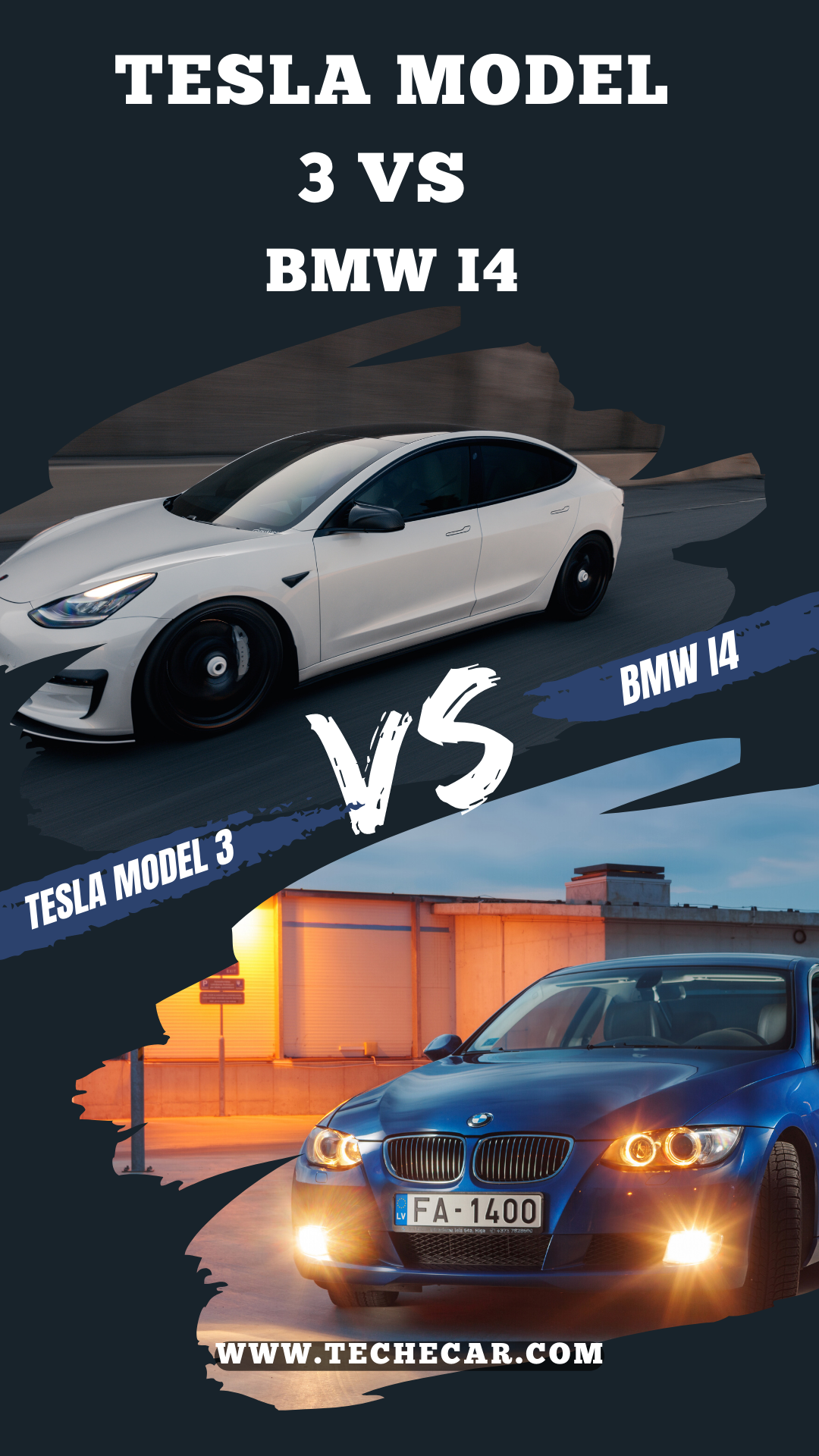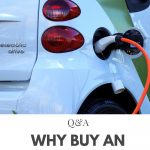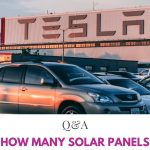Tesla Model 3 VS BMW i4
Topic: Tesla Model 3 VS BMW i4


Tesla Model 3 VS BMW i4
So life seems to be going great, and you have some spare money to exchange your car for something more contemporary. Nice! But what exactly are you planning to use it for? It’s going to be 100% electric! Isn’t it?
Tesla Model 3 VS BMW i4: Platforms and Variants
The Tesla Model 3 in three versions: what was previously known as”the Standard Range+, so that’s the basic Model. There’s also an option called the Long Range and the Performance. With the BMW, you have only two choices. There’s a basic eDrive40, followed by the M50, which is much more powerful.
Let’s return to the basics since these two cars were created entirely differently! Let’s discuss Platforms. Tesla has been an EV manufacturer by nature. However, BMW has been creating combustion for a long time.
This means that Tesla didn’t have any concessions to make there. They went about making the best EV that they were able to. However, BMW decided to do they develop a ground-up EV or create an unreliable EV platform that allows you to put the electric motor or combustion engine inside. They chose the alternative.
Now that’s not to say it’s impossible to make a quality electric vehicle if it’s not made from the ground. The examples of the Hyundai Kona and the Kia e-Niro prove otherwise. In general, you can perform more things when you have a car built on a specific platform.
Tesla Model 3 VS BMW i4: Design and Styling
Let’s discuss styling before we get into the more important things, such as range and power. The first thing to note is that there is a cultural distinction between the two manufacturers even at the beginning of design.
There’s a distinct way they approach styling, and it affects things such as the choice of fabric and the layout of cabins. While you may prefer one style over another but that doesn’t suggest that one is superior. They’re all different and will be able to cater to various tastes.
On the outside, the i4 will be a familiar sight to BMW enthusiasts and is nearly identical to the combustion series counterparts…to the not-so-trained eye! The M50 has minor changes to the design to make it a distinct German brand, a fast coupe with more aggressive styling.
However, the Tesla appears to be created in a wind tunnel. It’s simpler and more elegant. The front part starts lower before rising gradually. If you’re not looking at the wheels and a tiny spoiler in the rear, it’s not easy to determine what Model 3 you’re looking at.
Inside It’s got inside, it’s BMW design exactly as enthusiasts would prefer. The wide, curving screen that runs across the dashboard is an excellent addition and stands out against Model 3, which has a more pronounced and rectangular screen.
The absence of buttons on Model 3’s screen Model 3 gives it a modern and minimalist look. The BMW is more conventional and doesn’t disturb the familiarity that many have become a norm. The materials will be better and have more soft leathers.
Tesla Model 3 VS BMW i4: Dimensions
The dimensions aren’t the most glamorous aspect of these vehicles. However, it’s essential to be mentioned as it could be the deciding factor for some. Both are sleek and low-profile. They’re almost alike in regards to length, width and height. However, the front and back ends appear to be a bit higher when you look at them.
Inside On the inside, Model 3 feels a bit more spacious because of the glass roof, which sweeps towards the rear. The advantages of building an electric vehicle on a custom-designed platform are shown. There’s more room in the back for three adults.
The absence of a transmission tunnel ensures that the driver in the middle will not suffer from pain after a short period of driving. There’s also a lot more room in the centre console.
The additional space continues to be found in the Model 3 with its frunk and spacious trunk/boot. Some criticize Model 3 for its size. Model 3 for the size of the door, but it’s still an excellent space for a vehicle of the same size.
Tesla Model 3 VS BMW i4: Battery, Range and Charging
We’ll move to the batteries range, charging, and begin with the batteries. What’s the story behind the two cars?
Let’s examine Tesla first because talking about batteries here is complicated. There’s a reason Tesla doesn’t release official battery sizes, which means we have to guess what they’re. They also do not have typical cycles of model years; instead, they implement small changes every day.
One of them is changing certain Model 3s over to the LFP battery pack with more capacity. You can now buy an entry-level Model 3 with a 57.5kWh battery that will last for 250 miles in real-world conditions. However, let’s examine the two alternatives since they’re more similar.
Let’s set the eDrive40 to its counterpart, the Long Range Model 3. The BMW comes with a battery usable of 80.7kWh instead of Model 3’s Model 3 that you can today get with 75kWh usable. This is a slight advantage in the case of BMW in size…but does it give you greater distance?
The WLTP numbers slightly favour Tesla. We believe that, in reality, there is no distinction. However, we’d prefer the Tesla to win if you had to. We believe that both vehicles are capable of 300 miles on the road. The mileage is less in winter and a little more in the city.
What when you need a little speed but have to choose which one to choose between, M50 and the Performance? M50 as well as the performance? Both vehicles come with identical batteries. Both the official ratings and our actual estimations suggest that Tesla has only a tiny margin.
This Tesla is the more efficient vehicle since it can get more of its battery. It’s not a huge surprise given that the BMW weighs 200kg heavier than the Tesla here.
What happens if you’re looking to recharge them again. It’s safe to say they’re both quite good choices!
Let’s begin with AC charging, where all of these vehicles will consume 11kW. On DC, it’s pretty decent too. Even the entry-level Model 3 will hit speeds around 175kW on DC. In the case of the BMW Model 3, both models will top out at 200kW.
Each of the Long Range and Performance variants of the Model 3 will peak at the 210kW mark. It’s drawing again. We’re going to award the win to Tesla because you have more power with the energy you store in its battery. Also, you have unlimited accessibility to Supercharger’s network.
Charging: Tie
If connected to the 240V charger, The i4 Model 3 and the i4 Model 3 require 10 hours for a full charge. However, the regular Model 3 is a bit faster (8.5 minutes).
Here are some DC rapid charging times that you need to be aware of:
BMW:
- 1kW charge: From 0% in 7.6 hours
- 50kW charger 50kW charger: 100 km of range in just 22 minutes
- 150kW charger: 100km of range in just 7 minutes
- 200kW charger 10 to 80 per cent charge in just 31 minutes
Tesla:
- Tesla Supercharger: 228 kilometres of range in just 15 minutes
Tesla Model 3 VS BMW i4: Performance
Now it’s time to get to the best stuff Performance! Let’s get the entry-level Model 3 out of the way and state that it’s equipped with an impressive 239kW power output which can complete the 0-62mph race within 6.1 seconds.
Let’s compare the eDrive 40 against Tesla’s Model 3 Long Range. With the BMW having an additional 200kg around, the car will require some power to compete with the Tesla. With 250kW and a 0-62mph time of 4.7 seconds, the BMW can reach the speed of 62mph in 5.7 seconds. It’s also quicker than the Model 3’s entry-level Model 3 but gets well out of the way in the Long Range, which takes only 4.4 seconds to reach the speed of 62mph.
Let’s look at how the i4 M50 stacks to Model 3 Performance. Model 3 Performance. Both models are equipped with all-wheel drive, meaning you’ll have no issue with a traction advantage on the road. The BMW comes with 400kW of power and 795Nm of torque. When it comes to power, Tesla is just ahead of it with 413kW. However, it is unable to match the torque of the 660Nm!
What does it mean when you set that foot in the throttle? The M50 can go from 0 to 62mph within 3.9 seconds, compared to the Model 3’s brisk 3.3 seconds. It’s important to note that German makers have earned themselves a reputation for over-promising and under-delivering on speeds.
Therefore, we believe that the two cars’ 1/4 mile and 0-62mph times will be nearly the same. The Tesla will probably get off the line just a little quicker. However, the higher power could see the BMW more powerful amid speed bumps on the Autobahn.
Performance: Tie
The great thing about electric cars is the instant torque delivery, which results in incredible acceleration. Look at these figures:
BMW:
- I4 40 eDrive: 5.7 seconds (RWD)
- I4 M50 xDrive: 3.9 minutes (AWD)
Tesla:
- Model 3: 6.1 seconds (RWD)
- Long Range Time: 4.4 seconds (AWD)
- Performance: 3.3 seconds (AWD)
Tesla Model 3 VS BMW i4
Behind the wheel
Tesla Model 3 VS BMW i4: Position of the driver, visibility, Quality of construction
Both cars come with pedals aligned with the steering wheel and seat. However, the BMW i4 places you much closer to the road than Tesla Model 3. Tesla Model 3. This, coupled with a seat for the driver that offers significantly more side support as opposed to the church pews that you find on Model 3, means that the BMW i4 does not just feel more like a classic performance vehicle from behind the wheel; however, it’s also more comfortable to drive at a speed of. With the Model 3, you need to bolster your body to the side of the car or centre console to prevent being pushed from the seat during rapid turns.
Finding your ideal driving posture is a more significant challenge when driving Model 3. From changing the mirrors on the doors to altering the height and reach that the wheel is, you’ll need to dig into the vast (15.0in the) screen while playing with the scroll button on the wheel.
It’s an unpleasant experience and isn’t recommended when driving. We prefer the more traditional layout of the i4, featuring physical buttons that adjust the steering wheel, mirrors, and digital instruments. They’re exactly where they would be inside the BMW 4 Series Gran Coupe built on.
The i4 can also share the Gran Coupe’s sharp and easy to read 12.3in the electronic instrument panel. It includes a customizable head-up display projected on the windscreen to ensure that critical information is always in view. It’s not so with Model 3, however.
Model 3 displays all of your information, such as the speed you travel at and the navigation directions, on the central display. Thankfully, Tesla has put the speed reading in the upper right-hand corner of the screen so as not to have to turn your head far to read it. However, it’s not perfect.
The i4 also has an edge in terms of interior quality. After its redesign in the past year and it’s now, the Model 3 may feel more sturdy than previous models. However, the German vehicle is a more high-end mix of materials.
The vegan leather seats on the Model 3, for example, do not feel as soft as the natural leather seats on the i4, and the sure edges of the trim panels are somewhat uncoordinated. It’s no doubt, however, that the car’s sleek style will appeal to a wide range of customers.
Tesla Model 3 VS BMW i4: Information systems for Infotainment
BMW i4
With multi-layered menus, the most current iDrive system isn’t as user-friendly as it replaces; however, it’s the most efficient system available. It’s responsive to inputs, comes with sharp graphics, and its physically rotating controller makes it easy to use when you’re on the move.
Unlike models like the Model 3, the i4 offers mirroring of your smartphone, which allows you to utilize your phone’s apps on the main screen. Additionally, its 17 speakers Harman Kardon stereo sounds beautifully well-balanced.
Tesla Model 3
The Model 3’s information infotainment system does not include any physical controls. Everything is controlled via the large 15.0 touchscreen, making it more challenging to use when driving. But, the menus are much easier to use than the multi-layered menus on the I4, and its display is bright and sharp. There are some excellent options, like Netflix streaming and video games ideal for watching movies when the car is charging.
Our verdict
What is the difference between these two vehicles? What is the reason you should choose one or the other?
The Tesla can beat it a little quicker, with just a little more range, higher performance, higher charging capacity, and larger internal space. But, as we’ve learned, it’s more than an exercise in numbers when you purchase an automobile. It’s the thing that catches your attention.
For some, the sensation of the cabin of the BMW will prevail every day. This and the feeling of comfort and familiarity from being part of the top German brand. Others, the technological superiority of Tesla and the Supercharger network, make it an easy decision.
It’s unlikely that the price of the car will influence buyers in any way. The cars generally coincide in cost depending on where you reside and what incentives are in place. Even if they are only the same amount of money between them, anyone who can afford one will likely be capable of affording the other.
It’s an excellent issue to have arguing about which of these fantastic automobiles is better!
The i4 is a fantastic machine. It’s smooth, quick, highly hushed when you go faster and has a luxurious interior with an excellent information system. But why can’t it pass this test? If you look at it as the ultimate performance car, it’s not the poise, grip or balance to compete with Model 3. This isn’t very pleasant if you’re looking at a car with an M-badge on the rump.
It’s especially the case in the case of its direct competitor, which is more powerful, faster and more practical and is also less expensive to purchase outright. Add in its better performance and Tesla’s excellent charging infrastructure. The Model 3 remains the most impressive electric vehicle you can purchase today.
1st – Tesla Model 3
- Super-quick, impressive handling. The car is spacious and practical. Tesla’s unparalleled Supercharger network
- In opposition to Lumpier, riding on damaged roads makes More wind noise; minor fitting as well as finish sporting driving posture
- Recommendations for alternatives None
2nd- BMW i4
- For Stonking speed; comfortable ride, high-end interior, excellent infotainment system
- In contrast to more expensive cash purchases, they are heavier and can feel; smaller rear headroom and space for luggage.
- Options to consider Front adjustable Lumbar support (PS195)
People Also Ask:
Which is better Tesla or BMW?
The BMW i4 beats the Tesla Model 3 by offering an endurance of 373 miles before recharging, while the Tesla Model 3 only accomplishes 348 miles using its battery. The Tesla is speedy, going between 0-60 to 60 mph in 2.28 seconds!
Can you charge BMW i4 at Tesla?
But, there are certain things you need to be aware of. While they have charge facilities available to non-Tesla users, Tesla’s high-speed Superchargers can only be utilized for Tesla vehicles. This means that there aren’t any adapters that permit the BMW electric vehicle to utilize the Supercharger.
Which one is faster Tesla or BMW
With the BMW with an additional 200kg roughly, it’ll require some power to compete with the Tesla. With 250 kW, the BMW can get you to 60mph in 5.7 minutes. It’s also more efficient than the Model 3’s entry-level Model 3 but gets well out of the way in the Long Range, which takes only 4.4 seconds to get to 62mph.
Tesla Model 3 performance vs BMW i4 M50?
The Tesla Model 3 Performance reached 60 at 60 mph from a stop at 3.63 seconds, similar to supercars just a few years back. For the i4 M50, it stood its own, as its electric version of the Model Performance was not much slower. It was able to complete the task in 3.72 seconds, which is a good sign that the accurate M model of the i4 could outdo the Tesla.
BMW i4 M50 vs Tesla Model 3 performance drag race?
The BMW ended up in the second spot in the following drag races in the subsequent drag races. It’s because the Model 3 Performance had a more efficient start in both races. For the first quarter-mile race, the i4 M50 completed the course in 11.98 seconds, 119.2 miles per hour. In the case of the Tesla one, it crossed the distance in 11.83 seconds and speed of 118 miles per hour. The BMW’s more incredible trap speed indicates that it was slowly catching the Tesla, but it was too late.
Recommended Articles:





